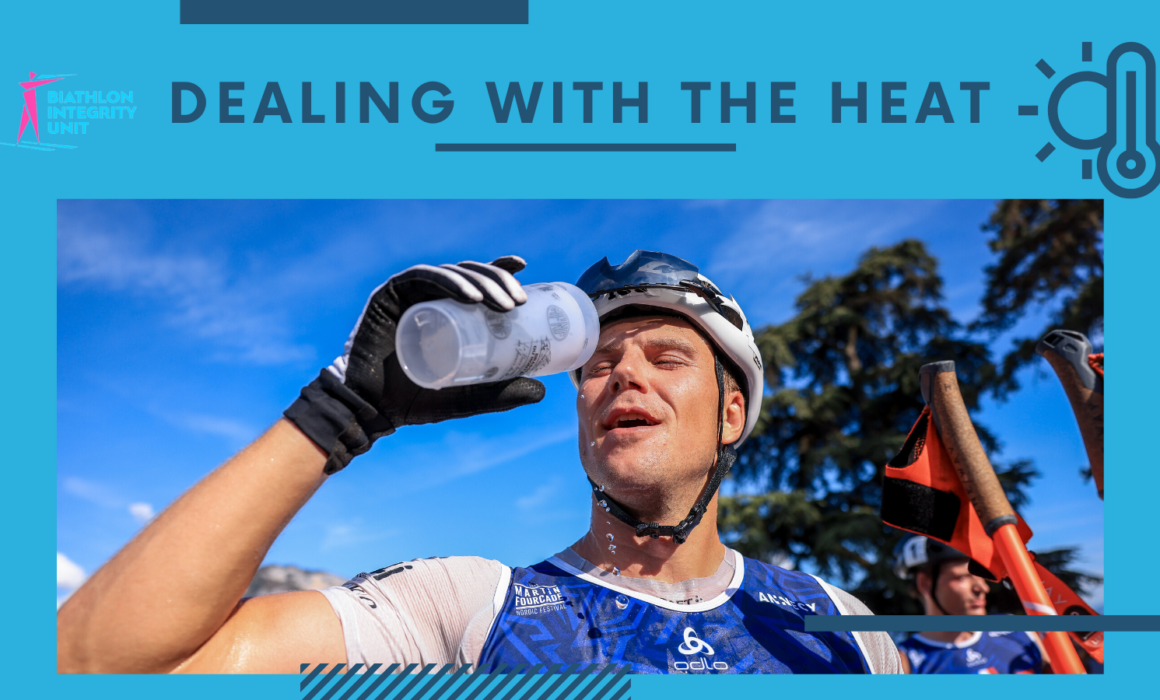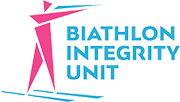Training in the heat
The BIU talked to Dr Carolin Kilian, a specialist in internal medicine, intensive care and sports medicine, who has many years of experience of working with biathlon athletes and teams, about how to train safely in hot and/or humid environments.
Individual factors, such as hydration status, sweat loss rate, acclimatization and fitness can influence an athlete´s capacity to tolerate and adapt to demanding environments.
However, Dr Kilian has useful advice for all athletes about training on hot summer days, beginning with the obvious: both the duration and intensity of exercise during hot and humid days should be reduced!
Time of day
The time of day can influence athletic performance. For example, endurance performance in the heat could benefit from a lower core temperature in the morning, whereas the optimum time for sprint performance might, according to some reports, be the late afternoon.
In any case, says Dr Kilian, the best time to train on hot summer days is likely to be in the early morning or late afternoon or early evening.
Fluid intake
Sweating rates in hot and humid environments can reach 2L per hour, making a higher fluid intake than normal necessary to avoid overheating. Appropriate fluid ingestion before and during sports activity can minimise dehydration and reduce the rate of increase in body core temperature.
Fluid loss and sweat rate vary widely for different people and different sports, making it difficult to give universal recommendations on fluid intake. Fluid requirement is determined by exercise intensity and heat stress. A higher metabolic rate and a higher heat category cause a higher sweat rate. Changes in body weight, urine volume and colour are all indicators that can help athletes to evaluate their fluid loss through sweating.
In general, Dr Kilian gives the following advice:
- Athletes should drink 5-7 ml per kg of body weight, 15 to 30 minutes before exercise
- When exercise lasts more than one hour, athletes should drink 10-13 ml per kg of body weight per hour, and after exercise an additional fluid intake of 4 ml per kg of body weight per hour of activity is recommended
- Dietary salt intake might be necessary during training or competitions that last longer than two and a half hours
Signs of overheating
Training and competition in hot environments can pose severe challenges to metabolic, thermo-regulatory, cardiovascular and cognitive function, says Dr Kilian.
Severe heat stress can lead to:
- Hyperthermic fatigue (abnormally high body temperature)
- Weakness
- Nausea and vomiting
- Dizziness
- Headache
- Changes of mental state (can lead to loss of consciousness)
- Orthostatic hypotension (low blood pressure)
Precautions
There is no recognised temperature in most countries in which biathlon is practised above which it is unsafe to train at all, provided that sensible precautions are taken, according to Dr Kilian.
Those precautions can include:
Acclimatisation
Heat acclimatisation can improve exercise-heat tolerance while training or competing in hot and humid conditions, with the duration depending on the difference between the climate at the places of residence and competition. The greater the difference, the longer it takes to acclimatise.
Natural heat acclimatisation is better than artificial acclimatisation, according to Dr Kilian, who recommends a minimum of one week and an optimum of two weeks of acclimatisation. Progress in heat acclimatisation is detectable through a decrease in core body temperature and heart rate, as well as an increase in sweat rate.
Warm-up/precooling
A warm-up period is essential to increase muscle temperature, perfusion (the passage of fluid through the system), and oxygen transport through capillary dilation. A higher body core temperature could lead to earlier heat strain (the overall physiological response resulting from heat stress) and reduced performance. Therefore, precooling through, for example, cold water exposure and/or use of ice vests, is a good way to reduce baseline body core temperature.
Appropriate clothing
In hot weather, athletes need to wear clothing that enables the body to dissipate excess heat and minimize heat gained from the environment. In most cases, it is best to wear as little clothing as possible to maximise evaporative heat loss through naked skin areas.
Clothing worn during the activity should be made of a lightweight, breathable material, through which sweat can easily evaporate.


